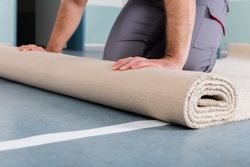7 Common Types of Mold Found at Home

In the average household, mold is far from a rare sight. This uninvited guest appears in many different guises, from the grey-black splotches on your shower walls to the green fibers growing on the berries in the back of the fridge. But just what are the differences between these household strains of mold? Which ones should you be worried about? If you’re in the dark when it comes to mold removal, use the following guide to learn about these seven common strains.
7 Molds Common to Homes
1. Chaetomium
This mold often appears after episodes of water damage, such as flooding in basements or attic leaks. You might recognize it by its musty odor, cotton-like appearance, and its gradual change from white to gray to brown (or black).
2. Fusarium
 This strain is unique in that it can both grow and spread in cold temperatures. Fusarium is commonly seen after water damage in carpeting, wallpaper, and upholstery. It often has a pink or reddish hue.
This strain is unique in that it can both grow and spread in cold temperatures. Fusarium is commonly seen after water damage in carpeting, wallpaper, and upholstery. It often has a pink or reddish hue.
3. Penicillin
Although it’s best known for its medicinal properties, penicillin can be harmful if it appears in your home. This mold type is allergenic, and it is characterized by a blue or green color and a velvet-like texture. You might see penicillin in mattresses, wallpaper, or carpets. Unfortunately, it can spread quickly, and it may cause pulmonary inflammation and asthma if mold removal expert is not performed in time.
4. Stachybotrys
This notorious mold strain is also referred to as “black mold,” and it can cause serious allergic reactions. You might find this mold in damp or humid areas, as well as wood, cardboard, or wicker items.
5. Acremonium
This mold is relatively small and can break down into a powder-like texture that’s pink, grey, white, or orange. It develops near areas of condensation, such as cooling coils, drain pans, and humidifiers. Acremonium is hazardous and can cause bone marrow and immune system problems, as well as brain function issues. Consult a mold removal expert as soon as you suspect that acremonium is growing in your home.
6. Alternaria
This is one of the most common types of allergenic mold, and can be detected by its green or brown fibers. You might notice alternaria in showers or under sinks. See a mold removal professional if you believe alternaria is growing in your home, because it can cause respiratory problems and tightness or congestion in the nose and mouth, similar to asthma.
7. Aureobasidium
This mold strain is often pink, brown, or black, but it is known to darken as it gets older. You might find this allergenic mold behind wallpaper, or on wood. It often causes eye, skin, or nail infections if direct contact is made.
If you believe any of these mold strains are growing in your home, get in touch with Ohana Environmental Construction of Honolulu, HI. They have over 35 years of experience dealing with hazardous materials, and they are skilled in the art of lead paint, and asbestos, and mold removal. To learn more about their 24/7 emergency service, visit their website. You can also call (808) 836-6955 for a free mold removal estimate.
About the Business
Have a question? Ask the experts!
Send your question

